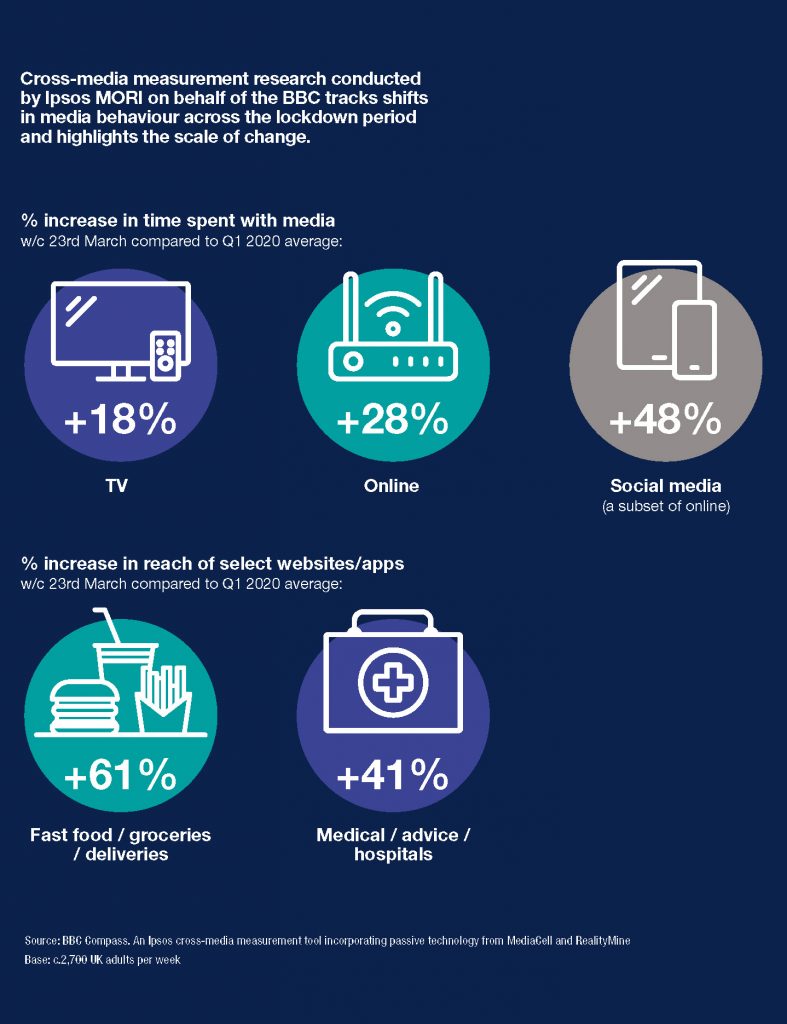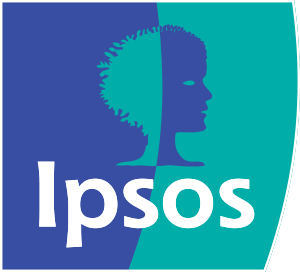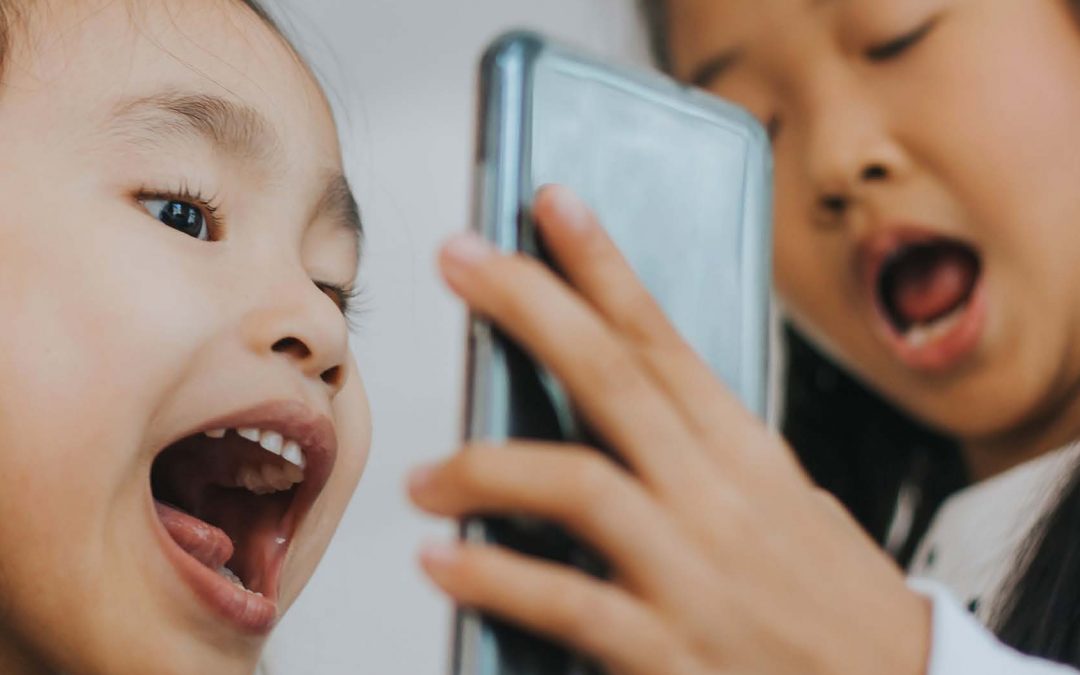24 March 2020: the day that Disney+ launched in the UK. It was a day that many, like me, had been eagerly anticipating for some time, keen to learn whether the latest ‘game changer’ lived up to expectations and the extent to which it would shake up the already evolving TV viewing landscape. Yet rewind back to January, when Disney announced they were bringing forward their UK launch date, and nobody could possibly have envisaged the scale of the change that we would actually be facing.
In an unprecedented turn of events, the UK began 24 March in our first full day of lockdown. Schools had already been shut, pubs were closed and we were implored to stay at home. With that instruction entertainment, education and wellbeing became increasingly confined to our homes.
A few weeks in, and we can already see evidence of rapidly changing media behaviour all around us. To give some examples from my own household:
- Last week my husband, who has watched a game at more than 1,000 football grounds, paused our Sky Sports subscription. Undoubtedly it will be back, but this is a turn of events that would have been unfathomable just weeks ago.
- Thanks to Google, we have shared our living room with a lion, a tiger and a grizzly bear!
- On multiple mornings, I have joined more than 700,000 people in the Joe Wicks daily PE lessons with my 5-year-old son. I have never been to a workout class in my life, but have somehow been compelled to be part of the movement and to connect to something bigger than my living room through the power of YouTube and TV.
- Facebook has actually brought me closer to my local community, virtually introducing me to people I had previously only waved to at the school gates, through community help pages and online events.
- I have never consumed so much news or so many movies in all my life. Just a couple of weeks ago media commentators were debating whether audiences have too much choice. Now, I am unashamedly flexing my household’s normal boundaries on screen time as I juggle full-time work with childcare and family. The TV has become a near constant in the background and my demand for choice could not be greater.
Seemingly every day, we wake up to fresh reports of new media sensations, growth in audiences and apps surging up the rankings. While we can’t go out we still need to be educated, informed, cared for and socialised. Media, among other things, have taken on many of these charges.

So, what does this mean for media?
Undoubtedly, there will be risks and opportunities for media brands old and new, as we increasingly look for new ways to fill our time.
We anticipate heightened trials of content and services that will diversify our experiences and could influence our preferences going forward (how many of you had used Houseparty prior to two weeks ago?). Some of these changes will of course be temporary (I don’t think I’ll do live Facebook quizzes with my neighbours any more, once this is all over), but some will be permanent, continuing to influence media choices and experiences post-lockdown.
The strongest media brands will be those that connect with audiences during these troubling times, but also demonstrate their continued relevance and ability to fulfil more enduring needs.
To do this, we can learn great lessons from the experiences of other nations further along their lockdown journey. For example, our colleagues at Ipsos in China have observed the multitude of ways in which brands have stepped up and played a significant role in the crisis by plugging in to the needs of the population. Their recommendations are clear: be present, be big, be adaptable, bridge the gap, and be positive.
Be present
Sports, drama and soap operas form the backbone of many of our TV schedules, but all are of course affected by the current situation. Channels such as Sky Sports no longer have access to the live events that fuel them, while production has halted on our long-running dramas. Our regular schedules have been or will soon be decimated, but it is important to remember that audience needs remain unchanged, or may actually be even stronger, during this time.
This is the time to maintain your presence and create even stronger bonds with audiences by filling the content void. It is the opportunity for channels and streaming services to utilise their archives and full libraries of video content, to solidify associations with the genres that people are craving. In this situation, you can become a go-to destination for absent genres (e.g. Netflix and Amazon Prime Video’s behind-the-scenes documentaries such as Sunderland ‘Til I Die, Take Us Home, and Drive to Survive are all fantastic examples of programmes that can satisfy a sports-deprived audience; ITV’s marketing of Euro ‘96 meets a clear need) and you can utilise the programmes themselves or the advertising around them to communicate a longer-term commitment to that genre, for lasting audience relationships.
Be big
Media brands should think beyond their immediate services and traditional audiences, as we anticipate a willingness to diversify and trial new things.
This is a significant window of opportunity for online brands like TikTok to extend their appeal to an older audience. The time is ripe for TikTok to make more people feel part of something through the tribalism of fun, viral challenges. We anticipate a broader population craving content, entertainment, social connections and escapism all at once, which could be key triggers to trial and the first step in building longer-term relationships with those audiences.
Conversely, more traditional broadcasters should seize the opportunity to engage with harder to reach audiences. It is well documented that linear TV channels have been losing younger audiences, but could this be an opportunity to rekindle relationships? The BBC’s decision to air Gavin and Stacey is a fantastic example of this following it’s Christmas success. With reach to BBC Three programmes tending to be low, this is also the opportunity to raise the profile of its archive, with the aim of encouraging a longer-term, loyal fan base. The first challenge is of course making them aware of this content, but with schedules depleted and demand high, the opportunity for exposure is there.
Be adaptable
In unusual times, the onus is on all of us to demonstrate initiative and respond to audience needs in new ways. We have seen some great examples of this already, from cinema releases such as Trolls World Tour coming straight to the small screen; to the virtual Grand National and eSports Formula 1 Grand Prix; to Joe Wicks bowling us all over on YouTube with his fitness and his generosity.
The online space is well set up for agile, fast-paced responses to changing audience needs. Through YouTube, for example, content that taps in to the cultural zeitgeist can be quickly produced in-home and delivered to our living rooms. Meanwhile, audiences may also be increasingly willing to compromise on quality of production, in order to fulfil their demand. At a time of heightened audience needs (e.g. for exercise, education, laughter), those people and producers who successfully nail relevance and virality have the opportunity to become overnight sensations.
Online content is also being successfully adapted for the bigger screen; BBC Bitesize is a key example. Having already evolved to facilitate more regular updates to meet demand, its subsequent transition of lessons to TV will help facilitate parents’ juggling of newfound educational responsibilities through a trusted source, while also undoubtedly introducing itself to new audiences along the way.
Bridge the gap
At a time of isolation, media are in the important position of still being able to bring people together for shared experiences.
Firstly, connect people within households. Ipsos’ syndicated Streaming 360 study* has highlighted the growing importance of shared viewing in our preparations for lockdown. Our latest wave highlights a shift in drivers of subscriptions to OTT services towards ‘has content that most of my family want to watch’. Streaming services should focus on shared viewing experiences (e.g. movie nights) in marketing, to maximise appeal.
Bring groups of households together through interaction. Apps like Houseparty are succeeding largely because they are recreating social moments at a time when we are deprived. Consider focusing more than ever on connecting audiences through your content (e.g. through enhancing your social media presence, play-along quizzes and associated apps).
Finally, the nation needs to be brought together now more than ever before. While we won’t have the Olympics to unite us this year, media can create national events which can be enjoyed and participated in from home and turn into national events. Clap for Carers is a great example of this – and long may it continue.
Be positive
More than ever, we need hope, we need happiness and we need inspiration. The opportunity here is to become that source of positivity and reassurance.
Of course, there is news to share and often that news is devastating. The media is also a crucial sense of information and instruction at this time and that should not be overlooked.
However, also consider how you can use your content, channels and services to keeps spirits up. Promote positivity, celebrate the endurance of the British people, aim to look ahead to the return to stability post-crisis, and be remembered for that longer term.
At Ipsos, we are tracking the evolving role that media play in the months ahead and bringing this to life, to inform media strategy. Through video-based communities and high-quality, fast-turnaround surveys, we are able to bring media owners, content creators and service providers closer to audiences, to understand and experience emerging and enduring needs as they happen during this global crisis. In doing so, we are able to demonstrate the value that media are bringing to households, identify opportunities to fill needs gaps and provide key insights to optimise execution of concepts and marketing.
*Streaming 360 is a new multi-client research product that helps clients refine platform positioning, enhance marketing strategy, and improve audience targeting and acquisition. It also delivers robust metric tracking of the ever-evolving streaming landscape. The cornerstones are customisable advanced analytics and insight delivery through powerful, predictive models and online tools. The study captures the interaction of consumer behaviour and attitudes, and the metrics to model intentions towards more than 50 different streaming services.

